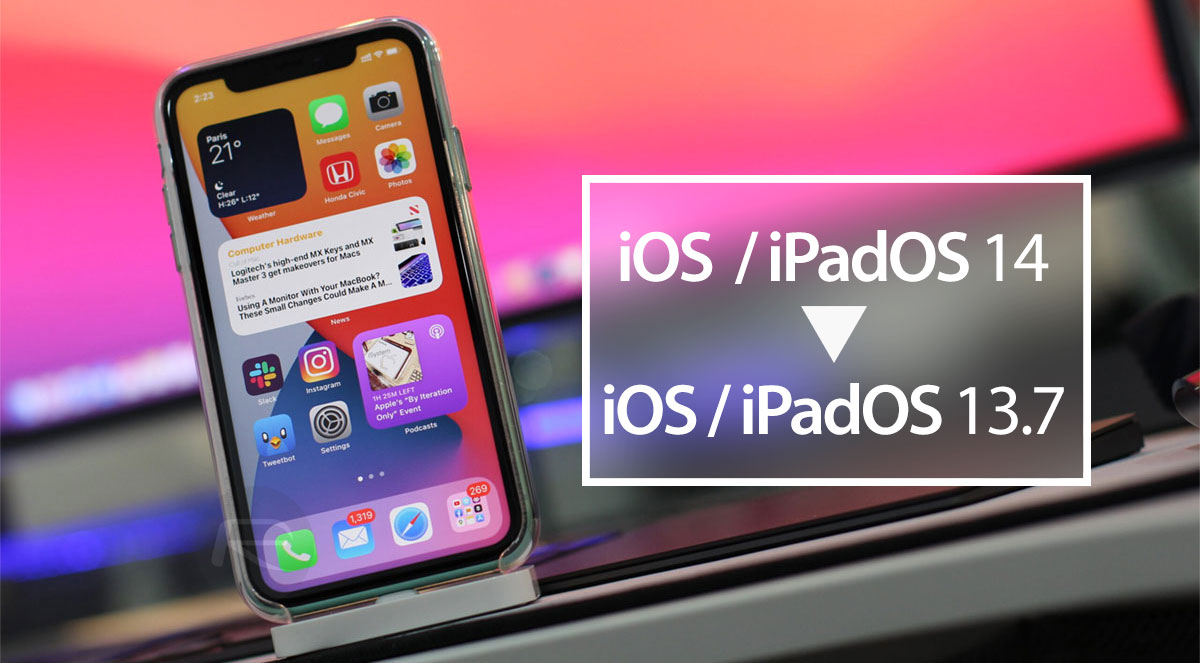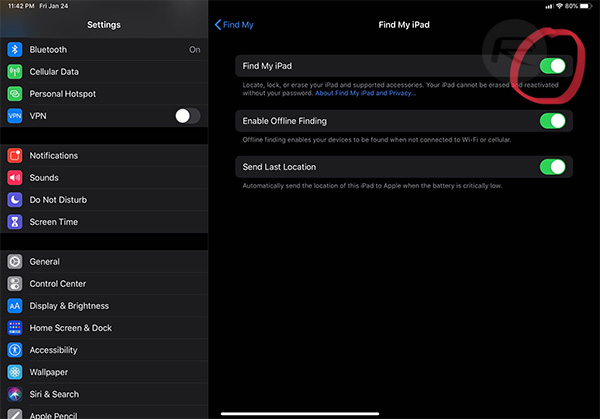Here’s how to downgrade iOS 14 and iPadOS 14 to iOS 13.7 on your compatible iPhone or iPad device. If you have taken the opportunity to get the latest major release but now want to roll back, then this is the process that you will need.
There are endless reasons why someone may want to roll back from iOS/iPadOS 14 to iOS/iPadOS 13.7.

Those reasons only need to be personal to each and every person but thankfully the whole process is extremely simple and won’t take much time at all. Here is the process that you will need to follow:
Step 1: First and foremost, ensure that you have the latest version of iTunes installed on your PC or Mac if you’re running something older than macOS Catalina (on the Mac). If you’re using macOS Catalina or later, you don’t need to worry about iTunes as Apple has integrated all of that functionality into Finder.
Step 2: Now, with iTunes up and running, you will need to download the relevant IPSW iOS/iPadOS 13.7 file that has been pre-compiled for your specific device. You can get that from here.
Step 3: You will also need to disable the Find My feature on the device. Jump over to Settings > iCloud > Find My and then turn the switch into the Off position. Provide the correct password for your Apple ID to confirm the decision.

Step 4: Connect your iPhone or iPad to your computer and make sure that iTunes is open on your pre-macOS Catalina Mac or your PC. Alternatively, ensure that a Finder window is open if you are running macOS Catalina or above. Put your device into DFU mode. We’ve covered that before and all the guides are below.
- iPhone 8 / 8 Plus, iPhone X / XR / XS / XS Max / 11 / 11 Pro / 11 Pro Max, or 2018/2020 iPad Pro owners can follow this guide.
- iPhone 7 / 7 Plus owners: Enter DFU Mode On iPhone 7 Or iPhone 7 Plus, Here’s How
- If you have an iPhone 6s / 6s Plus or any other iPad, then follow the instructions here.
Step 5: Once the device is detected in DFU Mode, iTunes or Finder will detect it and ask if you want to restore the phone. Press and hold the Option key on a Mac or the Shift key on a PC and click the Restore iPhone/iPad option.
Step 6: Next, you need to select the relevant IPSW file – this will, of course, be the iOS/iPadOS 13.7 IPSW that you downloaded in the earlier steps. Select that IPSW file from your computer and you are good to go.

During the process, your device will restart a couple of times during the process and then ultimately leave you running a fresh installation of iOS 13.7 or iPadOS 13.7.
You may also like to check out:
- How To Fix Bad iOS 14 Battery Life Drain [Guide]
- Download iOS 14 Final IPSW Links, OTA Profile File Along With iPadOS 14
- Jailbreak iOS 14 Status Update For iPhone And iPad
- iOS / iPadOS 14 Final Compatibility For iPhone, iPad, iPod touch Devices
- Download iOS 14 Beta 1 IPSW Links And Install On iPhone 11, Pro, XS Max, X, XR, 8, 7, Plus, 6s, iPad, iPod [Tutorial]
- Fix iOS 14 Update Requested Stuck Issue On iPhone And iPad, Here’s How
- Fix iOS 14 Estimating Time Remaining Stuck Issue, Here’s How
- Fix iOS 14 OTA Stuck On Preparing Update Issue, Here’s How
- Downgrade iOS 13.7 To iOS 13.6.1, Here’s How [Tutorial]
- Apple Watch ECG App Hack: Enable Outside US In Unsupported Country On Series 5 & 4 Without Jailbreak
You can follow us on Twitter, or Instagram, and even like our Facebook page to keep yourself updated on all the latest from Microsoft, Google, Apple, and the Web.

